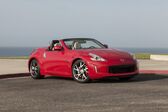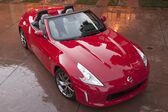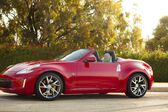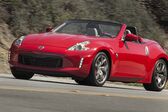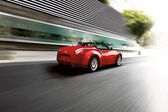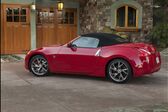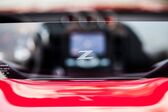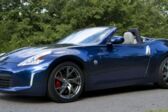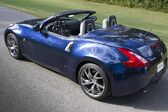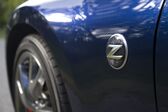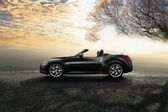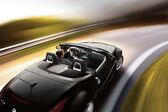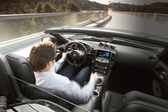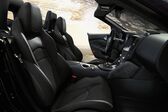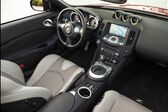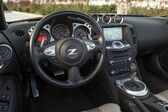Car Specs Nissan 370Z 370Z Roadster (facelift 2013) 3.7 V6 (328 Hp) Automatic
Nissan 370Z Roadster (facelift 2013) 3.7 V6 (328 Hp) Automatic Specs
Nissan 370Z Roadster (facelift 2013) 3.7 V6 (328 Hp) Automatic has been in production since 2013 - 2019. Cars comes in Roadster body types and can be suited with Petrol (Gasoline) engine types with a volume of 3.7L liters, engines produces a power of 328 Hp. Fuel consumption of Nissan 370Z Roadster (facelift 2013) 3.7 V6 (328 Hp) Automatic is 10.9 l/100 km.
General data Generation 370Z Roadster (facelift 2013) Modification 3.7 V6 (328 Hp) Automatic Start of production 2013 year End of production 2019 year Powertrain Architecture Internal Combustion engine Body type Roadster Seats 2 Doors 2 Fuel Type Petrol (Gasoline) Model VQ37VHR Fuel consumption (economy), emissions Fuel consumption - urban 15.8 l/100 km Fuel consumption - extra urban 8.1 l/100 km Fuel consumption - combined 10.9 l/100 km CO2 emissions 254 g/km Emission standard Euro 5 Performance specs Acceleration 0 - 100 km/h (0 - 62 mph) 5.8 sec Maximum speed 250 km/h Engine technical data Power 328 Hp @ 7000 rpm. Power per litre 88.7 Hp/l Torque 363 Nm @ 5200 rpm. Engine location Front, Longitudinal Engine displacement 3696 cm3 Number of cylinders 6 Position of cylinders V-engine Cylinder Bore 95.5 mm Piston Stroke 86 mm Compression ratio 11 Number of valves per cylinder 4 Fuel System Multi-point indirect injection Engine aspiration Naturally aspirated engine Engine oil capacity 4.9 l Coolant 9.1 l Suspension and brakes specs Drivetrain Architecture The Internal combustion engine (ICE) drives the rear wheels of the vehicle. Drive wheel Rear wheel drive Number of Gears (automatic transmission) 7 Front suspension Double wishbone Rear suspension Multi-link independent Front brakes Ventilated discs Rear brakes Ventilated discs Assisting systems ABS (Anti-lock braking system) Steering type Steering rack and pinion Tires size 225/50 R18; 245/45 R18; 245/40 R19; 275/35 R19 Wheel rims size 8JJ x 18; 9JJ x 18; 9JJ x 19; 10JJ x 19 Dimensions Length 4250 mm Width 1845 mm Height 1325 mm Wheelbase 2550 mm Front track 1550-1540 mm Rear (Back) track 1595-1565 mm Minimum turning circle (turning diameter) 10.6-11.0 m Weights, volume and space Max. weight 1885 kg Trunk (boot) space - minimum 140 l Fuel tank capacity 72 l
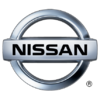 Nissan 370Z Roadster (facelift 2013) 3.7 V6 (328 Hp) Automatic has been in production since 2013 - 2019. Cars comes in Roadster body types and can be suited with Petrol (Gasoline) engine types with a volume of 3.7L liters, engines produces a power of 328 Hp. Fuel consumption of Nissan 370Z Roadster (facelift 2013) 3.7 V6 (328 Hp) Automatic is 10.9 l/100 km.
Nissan 370Z Roadster (facelift 2013) 3.7 V6 (328 Hp) Automatic has been in production since 2013 - 2019. Cars comes in Roadster body types and can be suited with Petrol (Gasoline) engine types with a volume of 3.7L liters, engines produces a power of 328 Hp. Fuel consumption of Nissan 370Z Roadster (facelift 2013) 3.7 V6 (328 Hp) Automatic is 10.9 l/100 km.
